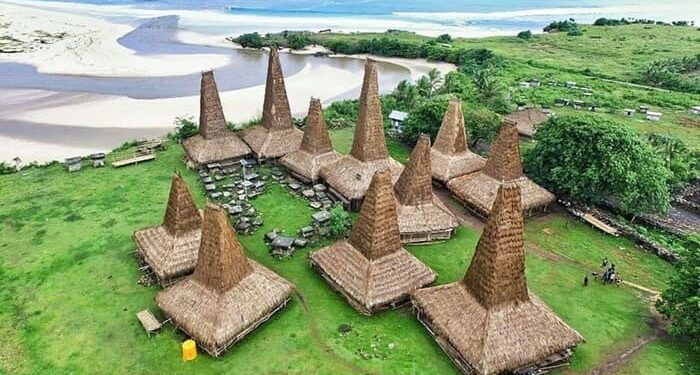Nowadays, the name of Sumba become popular tourism in Indonesia. Initially, Father Robert Ramone, a son of Sumba who wants to make his home area more known to the world.
He describes Sumba as a forgotten island in his pictorial book, Sumba, published in Holland.
Sumba Island abounds with distinctive natural and cultural highlights like unique woven fabrics, traditional villages, megalithic tombs, beautiful beaches, and the country’s vastest savanna landscape.
Sumba, which also boasts the Manupeu Tanah Daru and Laiwangi Wanggameti (MataLawa) national parks, is a home to various endemic butterflies and birds, the highest waterfall in East Nusa Tenggara, unique traditional costumes and preserved system of kingship — all of which contribute to the nation’s international repute.
With such resources, the only way to fully grasp the real beauty of this part of Indonesia is to take an extensive tour across the island.
Prai Ijing settlement in Tebar is one of the main tourist destinations due to its traditional housing architecture, ancestral rituals, and Sumba ikat center.
The 90-meter high Lapopu waterfall is located in Hatikuloku village, Wanokaka district, West Sumba, and is the highest in East Nusa Tenggara (NTT), falling in stages down a steep rocky slope into a pool.
The savanna of Waerinding, East Sumba, is perhaps the most popular place in the regency for taking selfies and watching the sunset, besides being a vast cattle grazing area.
From the summit of Mount Wanggameti in East Sumba, tourists can enjoy spectacular views of the green and immense savanna with hundreds of grazing buffalos, cows, horses, and goats. “The rolling hills of the savanna come in three colors, brown, black and green, which compare with Flores Island’s three red, green, and blue lakes,” MataLawa staffer Tri Wiyato pointed out.
Sumba people are proud of their island’s natural beauty, which is reminiscent of Africa’s savanna plains.
For travelers who want to experience the many sides of Indonesia, an expedition to Sumba is a must.
The Sumba Museum also has a very diverse collection, ranging from weapons, jewelry, to traditional Sumba musical instruments, all of which are equipped with information about the history and position in Sumba culture.
If you are lucky, you can also watch traditional dances performed by local art studios.
Various studios often hold events on certain nights, with dance performances from other regions on the island of Sumba. Visitors can even dance to enliven the atmosphere.
Sumba offers simple accommodation. However, the specialty lies in how this place invites us to admire and love Sumba culture itself.
In accordance with the simple ideals of its originator, Father Robert Ramone.



